- Home
- Lawrence Block
Hope to Die Page 2
Hope to Die Read online
Page 2
Page 2
But no, its too late now. The Hollanders have arrived, theyre climbing the half-flight of marble steps to their front door. Do they sense an alien presence within? Its possible that they do. Susan Hollander is a creative person, artistic, intuitive. Her husband is more traditionally practical, trained to deal in facts and logic, but his professional experience has taught him to trust his intuition.
She has a feeling, and she takes his arm. He turns, looks at her, can almost read the thought written on her face. But all of us get feelings all the time, premonitions, vaguely disquieting intimations. Most of them turn out to be nothing, and we learn to ignore them, to override our personal early warning systems. At Chernobyl, you may recall, the gauges indicated a problem; the men who read the gauges decided they were faulty, and ignored them.
He has his key out, and slips it into the lock. Inside, the two men hear the key in the lock. The seated man gets to his feet, the pacer moves toward the door. Byrne Hollander turns the key, pushes the door open, lets his wife enter first, follows her inside.
Then they catch sight of the two men, but by now its too late.
I could tell you what they did, what they said. How the Hollanders begged and tried to bargain, and how the two men did what theyd already decided to do. How they shot Byrne Hollander three times with a silenced. 22 automatic, twice in the heart and once in the temple. How one of them, the pacer, raped Susan Hollander fore and aft, ejaculating into her anus, and then thrust the fireplace poker into her vagina, before the other man, the one who had been sitting patiently earlier, out of mercy or the urge to get out of there, grabbed her by her long hair, yanked her head back forcefully enough to separate some hairs from her scalp, and cut her throat with a knife hed found in the kitchen. It was of carbon steel, with a serrated edge, and the manufacturer swore it would slice through bone.
I would be imagining all of this, just as I imagined them holding hands as they crossed the street, even as I imagined the two men waiting for them, one sitting in the tobacco-brown chair, the other pacing before the fireplace. I have let my imagination work with the facts, never contradicting them but filling in where they leave off. I dont know, for example, that some inner prompting warned either or both of the Hollanders that danger waited within their house. I dont know that the rapist and the knife-wielder were different men. Maybe the same man raped her as killed her. Maybe he killed her while he was inside of her, maybe that increased his pleasure. Or maybe he tried it out, thinking it might heighten his climax, and maybe it did, or maybe it didnt.
Susan Hollander, sitting at her desk on the top floor of her brownstone, used her imagination to write her stories. I have read some of them, and they are dense, tightly crafted constructions, some set in New York, some in the American West, at least one set in an unnamed European country. Her characters are at once introspective and, often, thoughtless and impulsive. They are, to my mind, not much fun to be around, but they are convincingly real, and they are clearly creatures of her imagination. She imagined them, and brought them to life upon the page.
One expects writers to use their imaginations, but that portion of the mind, of the self, is as much a part of the equipment of a policeman. A cop would be better off without a gun or a notebook than without an imagination. For all that detectives, private and public, deal in and count on facts, it is our capacity to reflect, to imagine, that points us to solutions. When two cops discuss a case theyre working on, they talk less about what they know for a fact than what they imagine. They construct scenarios of what might have happened, and then look for facts that will support or knock down their constructions.
And so I have imagined the final moments of Byrne and Susan Hollander. Of course I have gone much farther in my imagination than I have felt it necessary to recount here. The facts themselves go farther than Ive gone here- the blood spatters, the semen traces, the physical evidence painstakingly gathered and recorded and assessed by the forensic technicians. Even so, there are questions the evidence doesnt answer unequivocally. For example, which of the Hollanders died first? Ive suggested that they shot Byrne Hollander before they raped his wife, but it could have been the other way around; the physical evidence allows for either scenario. Perhaps he had to watch her violation and hear her screams until the first bullet mercifully blinded and deafened him. Perhaps she saw her husband killed before she was seized and stripped and taken. I can imagine it either way, and have in fact imagined it every possible way.
Here is how I prefer to imagine it: Almost as soon as they are inside the house and the door is kicked shut, one of the men shoots Byrne Hollander three times, and he is dead before the third bullet enters his body, dead before he hits the floor. The shock alone is enough to induce an out-of-body experience in his wife, and Susan Hollander, disembodied, hovers somewhere near the ceiling and watches, emotionally and physically disconnected, while her body is abused on the floor below her. Then, when they cut her throat, that body dies, and the part of her that has been watching is drawn down that long tunnel that seems to be a part of all near-death experiences. Theres a white light, and shes drawn into the light, and there she finds the people who loved her and are waiting for her. Her grandparents, of course, and her father, who died when she was a child. Her mother, who died just two years ago, and her son, of course, Sean. Theres never been a day that she hasnt thought of Sean, and hes there now, waiting for her.
And her husbands there, too. They were only apart for a few minutes, really, and now theyll be together forever.
Well, thats how I prefer to imagine it. And its my imagination. I guess I can do as I please with it.
TWO
Their daughter Kristin found the bodies. Shed spent the evening with friends in Chelsea and was going to stay over at a girlfriends apartment in London Terrace, but that would have meant wearing the same clothes to work in the morning or else running home first to change. A man shed just met offered her a ride home, and she took it. It was a few minutes after one when he pulled up and double-parked in front of the house on West Seventy-fourth.
He was going to walk her to her door, but she stopped him. Still, he waited while she crossed the sidewalk and mounted the steps, waited while she used her key, waited until she was inside. Did he sense something? Probably not. I suspect it was habit, the way he was brought up: when you see a woman home, you wait until shes safely inside before you take your leave.
So he was still there, just about to pull away, when she reappeared in the doorway, her face a mask of horror. He killed the ignition and got out to see what was the matter.
The story broke much too late for the morning papers, but it was the lead item on the local news, so Elaine and I learned about it at breakfast. The gal on New York One reported that the victims had attended a concert at Lincoln Center that evening, so we knew wed been there listening to the same music with them; what we didnt know then was that theyd been at the patrons reception and dinner as well. It was unsettling to think wed been in the same concert hall with them, along with several thousand other people; it would be more unsettling later to realize that wed all been part of a considerably more intimate gathering.
The double murder was more than front-page news. It was, in journalistic terms, a wonderful story. The victims, a prominent attorney and a published writer, were decent, cultured people, murdered brutally in their own home. Shed been raped, always a bonus for the tabloid reader, and subjected to a second violation with the fireplace poker. In a less outspoken time than ours, that last detail would have been veiled. The police generally hold back something like that, to make it easier to screen false confessions, but this time the press got hold of it. The Times left it unreported, perhaps out of decency, and the TV news hinted at a further violation without getting specific, but the News and the Post showed no such restraint.
A police canvass of the area turned up a neighbor who had spotted two men leaving a house, probably the Hollander house, sometime after mi
dnight and before one. She noticed their departure because each had a laundry bag slung over his shoulder. She didnt regard the sight as suspicious, never thinking they might be burglars, assuming instead that they were roommates, headed for the twenty-four-hour laundromat around the corner on Amsterdam. She remembered thinking that it was a shame young people had to work such long hours these days, and the only time they had to do their laundry was in the middle of the night.
The description she furnished was vague, and a session with a police artist led nowhere, as she had never gotten a clear look at their faces. They were, as she recalled, neither tall nor short, neither fat nor thin. She thought, although she couldnt swear to it, mind you, that one of them might have had a beard.
Forensics thought she might be right. Theyd recovered a couple of hairs that had almost certainly come from a mans beard, and you didnt need a DNA check to know they werent Byrne Hollanders, as he was clean-shaven.
According to the woman, it was possible that one of them limped. She remembered there was something awkward about his walk, attributing it at the time to the weight of the sack of laundry he was carrying. And maybe thats all it was, but maybe hed been limping. She couldnt say for sure.
When you luck into a story that sells papers, you keep it on the front page whether or not there are any new developments. The Post showed the most imagination, actually running a sketch of the suspect with the headline HAVE YOU SEEN HIM LIMPING? It showed a man with a Mephistophelian beard and generally demonic facial features, a sack slung over his shoulder, furtively slouching. Toward Amsterdam Avenue, I suppose, if not Bethlehem. The implication, of course, was that this was a police sketch, but it was no such thing. Some staff artist at the paper had cobbled it up to order and there it was on the front page, with the Posts readers urged to come up with a name to go with the imaginary face.
And, of course, dozens of them did, flooding the police tip line, the number of which the paper had been considerate enough to furnish. When someone phones in a tip in a high-profile case, you cant dismiss it out of hand, even when its the result of some journalists fantasy. Theres always the possibility that the tips legit, that the callers using the sketch as an excuse to point the police toward someone of whom he has reason to be suspicious. Every call gets checked out, not because those checking expect results, but because they know how theyll look if the tip they overlook turns out to be on the money. The first thing you learn in the NYPD, on the job if not in classes at the academy, is to cover your ass. And the job keeps on teaching it to you, over and over.
One caller said the cops ought to take a look at a guy named Carl Ivanko. It wasnt that the sketch looked like him, exactly, because Carls face was sort of lopsided, as well as longer and narrower than the face in the sketch. And the caller didnt know if Carl had a beard. Facial hair was sort of an on-and-off thing with him, and it had been a while since the caller ran into Carl, and if he never saw him again, well, that would be fine.
So it was more the description than the sketch, really, that had brought Carl to mind, although there was something about the sketch that had triggered his action, even though it didnt bear much resemblance to Carl. The thing was, Carl had something wrong with his hip, and it gave him an awkward walk some of the time. It wasnt a limp, not exactly, but what it came down to was he walked funny.

 Tanner on Ice
Tanner on Ice Hit Me
Hit Me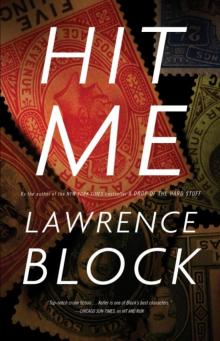 Hit and Run
Hit and Run Hope to Die
Hope to Die Two For Tanner
Two For Tanner Tanners Virgin
Tanners Virgin Dead Girl Blues
Dead Girl Blues One Night Stands and Lost Weekends
One Night Stands and Lost Weekends A Drop of the Hard Stuff
A Drop of the Hard Stuff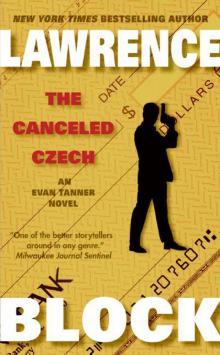 The Canceled Czech
The Canceled Czech Even the Wicked
Even the Wicked Me Tanner, You Jane
Me Tanner, You Jane Quotidian Keller
Quotidian Keller Small Town
Small Town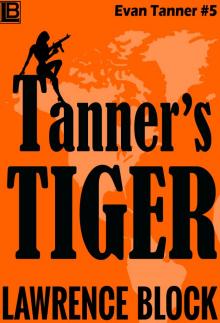 Tanners Tiger
Tanners Tiger A Walk Among the Tombstones
A Walk Among the Tombstones Tanners Twelve Swingers
Tanners Twelve Swingers Gym Rat & the Murder Club
Gym Rat & the Murder Club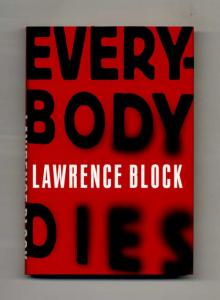 Everybody Dies
Everybody Dies The Thief Who Couldnt Sleep
The Thief Who Couldnt Sleep Hit Parade
Hit Parade The Devil Knows Youre Dead
The Devil Knows Youre Dead The Burglar in Short Order
The Burglar in Short Order A Long Line of Dead Men
A Long Line of Dead Men Keller's Homecoming
Keller's Homecoming Resume Speed
Resume Speed Keller's Adjustment
Keller's Adjustment Eight Million Ways to Die
Eight Million Ways to Die Time to Murder and Create
Time to Murder and Create Out on the Cutting Edge
Out on the Cutting Edge A Dance at the Slaughter House
A Dance at the Slaughter House In the Midst of Death
In the Midst of Death When the Sacred Ginmill Closes
When the Sacred Ginmill Closes You Could Call It Murder
You Could Call It Murder Keller on the Spot
Keller on the Spot A Ticket to the Boneyard
A Ticket to the Boneyard A Time to Scatter Stones
A Time to Scatter Stones Keller's Designated Hitter
Keller's Designated Hitter A Stab in the Dark
A Stab in the Dark Sins of the Fathers
Sins of the Fathers The Burglar in the Closet
The Burglar in the Closet Burglar Who Dropped In On Elvis
Burglar Who Dropped In On Elvis The Burglar Who Painted Like Mondrian
The Burglar Who Painted Like Mondrian The Girl With the Long Green Heart
The Girl With the Long Green Heart The Burglar Who Counted the Spoons (Bernie Rhodenbarr)
The Burglar Who Counted the Spoons (Bernie Rhodenbarr) Burglar Who Smelled Smoke
Burglar Who Smelled Smoke Rude Awakening (Kit Tolliver #2) (The Kit Tolliver Stories)
Rude Awakening (Kit Tolliver #2) (The Kit Tolliver Stories) Don't Get in the Car (Kit Tolliver #9) (The Kit Tolliver Stories)
Don't Get in the Car (Kit Tolliver #9) (The Kit Tolliver Stories) CH04 - The Topless Tulip Caper
CH04 - The Topless Tulip Caper You Can Call Me Lucky (Kit Tolliver #3) (The Kit Tolliver Stories)
You Can Call Me Lucky (Kit Tolliver #3) (The Kit Tolliver Stories) CH02 - Chip Harrison Scores Again
CH02 - Chip Harrison Scores Again Strangers on a Handball Court
Strangers on a Handball Court Cleveland in My Dreams
Cleveland in My Dreams Clean Slate (Kit Tolliver #4) (The Kit Tolliver Stories)
Clean Slate (Kit Tolliver #4) (The Kit Tolliver Stories) The Burglar Who Traded Ted Williams
The Burglar Who Traded Ted Williams Burglar on the Prowl
Burglar on the Prowl In For a Penny (A Story From the Dark Side)
In For a Penny (A Story From the Dark Side) Catch and Release Paperback
Catch and Release Paperback Ride A White Horse
Ride A White Horse No Score
No Score Looking for David (A Matthew Scudder Story Book 7)
Looking for David (A Matthew Scudder Story Book 7)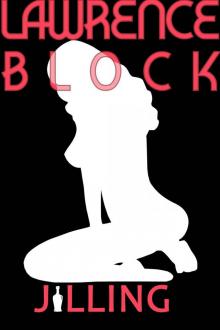 Jilling (Kit Tolliver #6) (The Kit Tolliver Stories)
Jilling (Kit Tolliver #6) (The Kit Tolliver Stories) Ariel
Ariel Enough Rope
Enough Rope Grifter's Game
Grifter's Game Canceled Czech
Canceled Czech Unfinished Business (Kit Tolliver #12) (The Kit Tolliver Stories)
Unfinished Business (Kit Tolliver #12) (The Kit Tolliver Stories) Thirty
Thirty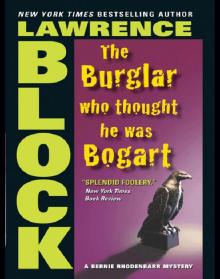 The Burglar Who Thought He Was Bogart
The Burglar Who Thought He Was Bogart Make Out with Murder
Make Out with Murder One Last Night at Grogan's (A Matthew Scudder Story Book 11)
One Last Night at Grogan's (A Matthew Scudder Story Book 11) The Burglar on the Prowl
The Burglar on the Prowl Welcome to the Real World (A Story From the Dark Side)
Welcome to the Real World (A Story From the Dark Side) Keller 05 - Hit Me
Keller 05 - Hit Me Walk Among the Tombstones: A Matthew Scudder Crime Novel
Walk Among the Tombstones: A Matthew Scudder Crime Novel Ronald Rabbit Is a Dirty Old Man
Ronald Rabbit Is a Dirty Old Man The Burglar Who Studied Spinoza
The Burglar Who Studied Spinoza The Burglar Who Liked to Quote Kipling
The Burglar Who Liked to Quote Kipling Keller in Des Moines
Keller in Des Moines Hit List
Hit List The Dettweiler Solution
The Dettweiler Solution HCC 115 - Borderline
HCC 115 - Borderline A Drop of the Hard Stuff: A Matthew Scudder Novel
A Drop of the Hard Stuff: A Matthew Scudder Novel Step by Step
Step by Step The Girl With the Deep Blue Eyes
The Girl With the Deep Blue Eyes If You Can't Stand the Heat (Kit Tolliver #1) (The Kit Tolliver Stories)
If You Can't Stand the Heat (Kit Tolliver #1) (The Kit Tolliver Stories) The Topless Tulip Caper
The Topless Tulip Caper Dolly's Trash & Treasures (A Story From the Dark Side)
Dolly's Trash & Treasures (A Story From the Dark Side) The Triumph of Evil
The Triumph of Evil Fun with Brady and Angelica (Kit Tolliver #10 (The Kit Tolliver Stories)
Fun with Brady and Angelica (Kit Tolliver #10 (The Kit Tolliver Stories) Burglars Can't Be Choosers
Burglars Can't Be Choosers Who Knows Where It Goes (A Story From the Dark Side)
Who Knows Where It Goes (A Story From the Dark Side) Deadly Honeymoon
Deadly Honeymoon Like a Bone in the Throat (A Story From the Dark Side)
Like a Bone in the Throat (A Story From the Dark Side) A Chance to Get Even (A Story From the Dark Side)
A Chance to Get Even (A Story From the Dark Side) The Boy Who Disappeared Clouds
The Boy Who Disappeared Clouds Collecting Ackermans
Collecting Ackermans Waitress Wanted (Kit Tolliver #5) (The Kit Tolliver Stories)
Waitress Wanted (Kit Tolliver #5) (The Kit Tolliver Stories) One Thousand Dollars a Word
One Thousand Dollars a Word Even the Wicked: A Matthew Scudder Novel (Matthew Scudder Mysteries)
Even the Wicked: A Matthew Scudder Novel (Matthew Scudder Mysteries) Hit Man
Hit Man The Night and The Music
The Night and The Music Ehrengraf for the Defense
Ehrengraf for the Defense The Merciful Angel of Death (A Matthew Scudder Story Book 5)
The Merciful Angel of Death (A Matthew Scudder Story Book 5) The Burglar in the Rye
The Burglar in the Rye I Know How to Pick 'Em
I Know How to Pick 'Em Getting Off hcc-69
Getting Off hcc-69 Three in the Side Pocket (A Story From the Dark Side)
Three in the Side Pocket (A Story From the Dark Side)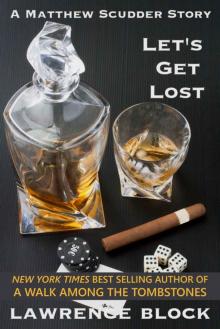 Let's Get Lost (A Matthew Scudder Story Book 8)
Let's Get Lost (A Matthew Scudder Story Book 8) Strange Are the Ways of Love
Strange Are the Ways of Love MOSTLY MURDER: Till Death: a mystery anthology
MOSTLY MURDER: Till Death: a mystery anthology Masters of Noir: Volume Four
Masters of Noir: Volume Four A Week as Andrea Benstock
A Week as Andrea Benstock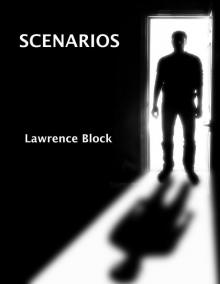 Scenarios (A Stoiry From the Dark Side)
Scenarios (A Stoiry From the Dark Side) The Sex Therapists: What They Can Do and How They Do It (John Warren Wells on Sexual Behavior Book 15)
The Sex Therapists: What They Can Do and How They Do It (John Warren Wells on Sexual Behavior Book 15)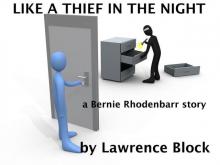 Like a Thief in the Night: a Bernie Rhodenbarr story
Like a Thief in the Night: a Bernie Rhodenbarr story A Diet of Treacle
A Diet of Treacle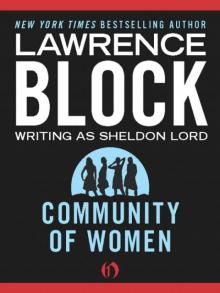 Community of Women
Community of Women Different Strokes: How I (Gulp!) Wrote, Directed, and Starred in an X-rated Movie (John Warren Wells on Sexual Behavior)
Different Strokes: How I (Gulp!) Wrote, Directed, and Starred in an X-rated Movie (John Warren Wells on Sexual Behavior) You Don't Even Feel It (A Story From the Dark Side)
You Don't Even Feel It (A Story From the Dark Side) Zeroing In (Kit Tolliver #11) (The Kit Tolliver Stories)
Zeroing In (Kit Tolliver #11) (The Kit Tolliver Stories) The Wife-Swap Report (John Warren Wells on Sexual Behavior)
The Wife-Swap Report (John Warren Wells on Sexual Behavior) Keller's Fedora (Kindle Single)
Keller's Fedora (Kindle Single) Speaking of Lust
Speaking of Lust Everybody Dies (Matthew Scudder)
Everybody Dies (Matthew Scudder) Defender of the Innocent: The Casebook of Martin Ehrengraf
Defender of the Innocent: The Casebook of Martin Ehrengraf After the First Death
After the First Death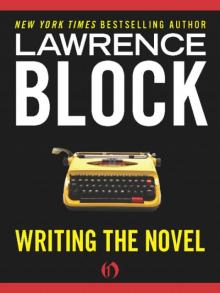 Writing the Novel
Writing the Novel How Far - a one-act stage play
How Far - a one-act stage play Chip Harrison Scores Again
Chip Harrison Scores Again The Topless Tulip Caper ch-4
The Topless Tulip Caper ch-4 The Crime of Our Lives
The Crime of Our Lives Killing Castro
Killing Castro The Trouble with Eden
The Trouble with Eden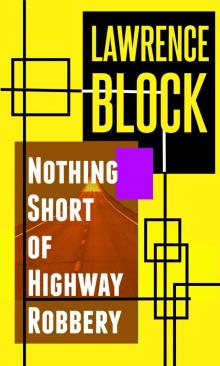 Nothing Short of Highway Robbery
Nothing Short of Highway Robbery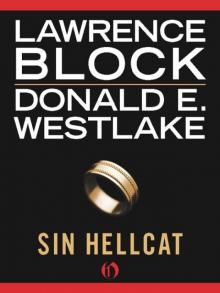 Sin Hellcat
Sin Hellcat Getting Off: A Novel of Sex & Violence (Hard Case Crime)
Getting Off: A Novel of Sex & Violence (Hard Case Crime) Coward's Kiss
Coward's Kiss Alive in Shape and Color
Alive in Shape and Color Blow for Freedom
Blow for Freedom The New Sexual Underground: Crossing the Last Boundaries (John Warren Wells on Sexual Behavior Book 10)
The New Sexual Underground: Crossing the Last Boundaries (John Warren Wells on Sexual Behavior Book 10) April North
April North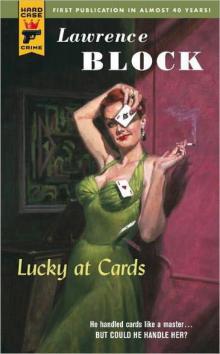 Lucky at Cards
Lucky at Cards One Night Stands; Lost weekends
One Night Stands; Lost weekends Sweet Little Hands (A Story From the Dark Side)
Sweet Little Hands (A Story From the Dark Side) Blood on Their Hands
Blood on Their Hands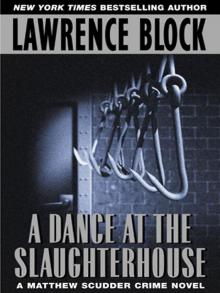 A Dance at the Slaughterhouse
A Dance at the Slaughterhouse Headaches and Bad Dreams (A Story From the Dark Side)
Headaches and Bad Dreams (A Story From the Dark Side) Keller's Therapy
Keller's Therapy The Specialists
The Specialists Hit and Run jk-4
Hit and Run jk-4 Threesome
Threesome Love at a Tender Age (John Warren Wells on Sexual Behavior)
Love at a Tender Age (John Warren Wells on Sexual Behavior) The Devil Knows You're Dead: A MATTHEW SCUDDER CRIME NOVEL
The Devil Knows You're Dead: A MATTHEW SCUDDER CRIME NOVEL Funny You Should Ask
Funny You Should Ask CH01 - No Score
CH01 - No Score Sex and the Stewardess (John Warren Wells on Sexual Behavior)
Sex and the Stewardess (John Warren Wells on Sexual Behavior) A Madwoman's Diary
A Madwoman's Diary When This Man Dies
When This Man Dies Sinner Man
Sinner Man Such Men Are Dangerous
Such Men Are Dangerous A Strange Kind of Love
A Strange Kind of Love Enough of Sorrow
Enough of Sorrow 69 Barrow Street
69 Barrow Street A Moment of Wrong Thinking (Matthew Scudder Mysteries Series Book 9)
A Moment of Wrong Thinking (Matthew Scudder Mysteries Series Book 9) Eight Million Ways to Die ms-5
Eight Million Ways to Die ms-5 Warm and Willing
Warm and Willing Mona
Mona In Sunlight or In Shadow
In Sunlight or In Shadow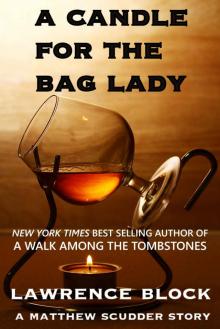 A Candle for the Bag Lady (Matthew Scudder Book 2)
A Candle for the Bag Lady (Matthew Scudder Book 2) Conjugal Rites (Kit Tolliver #7) (The Kit Tolliver Stories)
Conjugal Rites (Kit Tolliver #7) (The Kit Tolliver Stories) Speaking of Lust - the novella
Speaking of Lust - the novella Gigolo Johnny Wells
Gigolo Johnny Wells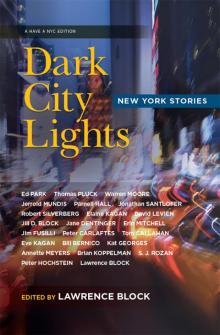 Dark City Lights
Dark City Lights Versatile Ladies: the bisexual option (John Warren Wells on Sexual Behavior)
Versatile Ladies: the bisexual option (John Warren Wells on Sexual Behavior) Passport to Peril
Passport to Peril The Taboo Breakers: Shock Troops of the Sexual Revolution (John Warren Wells on Sexual Behavior)
The Taboo Breakers: Shock Troops of the Sexual Revolution (John Warren Wells on Sexual Behavior) Lucky at Cards hcc-28
Lucky at Cards hcc-28 Campus Tramp
Campus Tramp 3 is Not a Crowd (John Warren Wells on Sexual Behavior)
3 is Not a Crowd (John Warren Wells on Sexual Behavior)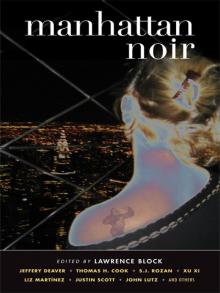 Manhattan Noir
Manhattan Noir The Burglar in the Library
The Burglar in the Library Doing It! - Going Beyond the Sexual Revolution (John Warren Wells on Sexual Behavior Book 13)
Doing It! - Going Beyond the Sexual Revolution (John Warren Wells on Sexual Behavior Book 13) So Willing
So Willing The Burglar Who Traded Ted Williams br-6
The Burglar Who Traded Ted Williams br-6 Candy
Candy Sex Without Strings: A Handbook for Consenting Adults (John Warren Wells on Sexual Behavior)
Sex Without Strings: A Handbook for Consenting Adults (John Warren Wells on Sexual Behavior) The Devil Knows You're Dead: A MATTHEW SCUDDER CRIME NOVEL (Matthew Scudder Mysteries)
The Devil Knows You're Dead: A MATTHEW SCUDDER CRIME NOVEL (Matthew Scudder Mysteries) Manhattan Noir 2
Manhattan Noir 2 The Scoreless Thai (aka Two For Tanner)
The Scoreless Thai (aka Two For Tanner)